
The Foshay Tower, now the W Minneapolis – The Foshay hotel, is a skyscraper in Minneapolis, Minnesota. Modeled after the Washington Monument, the building was completed in 1929, months before the stock market crash in October of that year. It has 32 floors and stands 447 feet (136 m) high, which made it one of the tallest buildings in the Midwest for 48 years. The antenna mast extends the total height of the structure to 607 feet (185 m). The building, which was added to the National Register of Historic Places in 1978, is an example of Art Deco architecture. Its address is 821 Marquette Avenue, although it is set well back from the street and is actually closer to 9th Street than Marquette.

The Cathedral of Saint Paul is a Roman Catholic cathedral in the city of Saint Paul, Minnesota. It is the co-cathedral of the Archdiocese of Saint Paul and Minneapolis, along with the Basilica of Saint Mary in Minneapolis. One of the most distinctive cathedrals in the United States, it sits on Cathedral Hill overlooking downtown Saint Paul and features a distinctive copper-clad dome. It is dedicated to Paul the Apostle, who is also the namesake of the City of Saint Paul. The current building opened in 1915 as the fourth cathedral of the archdiocese to bear this name. On March 25, 2009, it was designated as the National Shrine of the Apostle Paul by the United States Conference of Catholic Bishops. It is the third-largest Catholic cathedral and sixth-largest church in the United States.

Minneapolis City Hall and Hennepin County Courthouse, designed by Long and Kees in 1888, is the main building used by the city government of Minneapolis, as well as by Hennepin County, in the U.S. state of Minnesota. The structure has served as mainly local government offices since it was built, and today the building is 60 percent occupied by the city and 40 percent occupied by the County. The building is jointly owned by the city and county and managed by the Municipal Building Commission. The Commission consists of the chair of the County Board, the mayor of the City of Minneapolis, a member of the County Board and a member of the Minneapolis City Council. The County Board chair serves as the president of the Commission and the mayor serves as the vice president. The building bears a striking resemblance to the city hall buildings in Cincinnati and Toronto. The City Hall and Courthouse was added to the National Register of Historic Places in 1974.
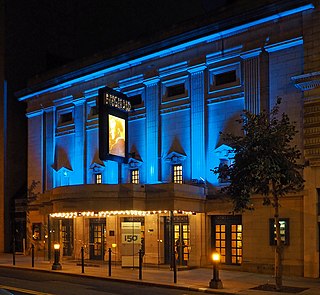
The Fitzgerald Theater is the oldest active theatre in Saint Paul, Minnesota, and the home of American Public Media's Live from Here. It was one of many theaters built by the Shubert Theatre Corporation, and was initially named the Sam S. Shubert Theater. It was designed by the noted Chicago architectural firm of Marshall and Fox, architects of several theaters for the Shuberts. In 1933, it became a movie outlet known as the World Theater. The space was purchased by Minnesota Public Radio in 1980, restored with a stage in 1986 as a site for Prairie Home, and renamed in 1994 after St. Paul native F. Scott Fitzgerald.

The Saint Paul City Hall and Ramsey County Courthouse, located at 15 Kellogg Boulevard West in Saint Paul, Ramsey County, in the U.S. state of Minnesota, is a twenty-story Art Deco skyscraper completed in 1932. Built during the Great Depression—a period of high unemployment and falling prices—the building's four-million-dollar budget was underspent, resulting in higher quality materials and craftsmanship than initially expected.
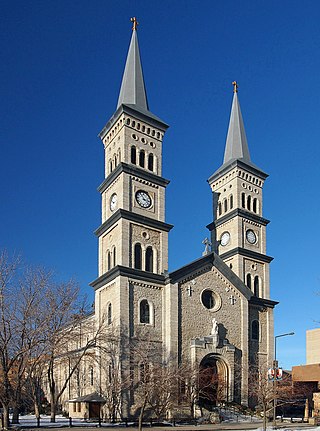
The Church of the Assumption Catholic Church was dedicated in 1874 and is the oldest existing church in Saint Paul. It is located at 51 West Seventh Street, in downtown Saint Paul. The building is listed on the National Register of Historic Places.

The Exchange Bank Building was built in 1880 as the most prominent commercial building in Farmington in the U.S. state of Minnesota. It is the city's second-oldest commercial building. The Italianate and Romanesque brick building is located at 320 Third Street and was designed by Saint Paul's Augustus Gauger.
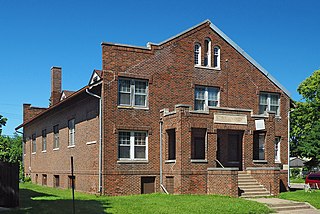
The Serbian Home is a two-story brick building, that was built in 1924 in South Saint Paul in the U.S. state of Minnesota. It was built as a community center for Serbian immigrants who worked in the meatpacking industry. It served as a museum respecting the multitude of ethnic groups who have made the city their home until 2020, when it was purchased and renovated by Serbian immigrant Aleksandar Stojmenovic to serve as an event center.

The Manhattan Building is a historic office and banking building located in Saint Paul, Minnesota.
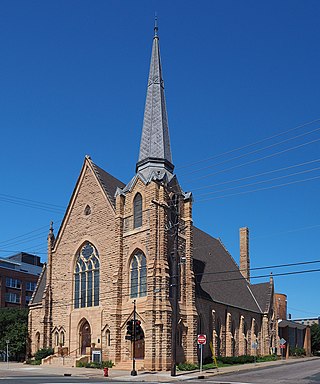
The First Baptist Church of St. Paul is an historic church building in Saint Paul, Minnesota, United States. The original steeple, which rose 145 feet (44 m) above the ground, was removed in 1945. The stone base was sinking into the marshy soil and causing structural strain on the rest of the building. A new, shorter steeple was erected, but without the belfry and clock that the original steeple had.
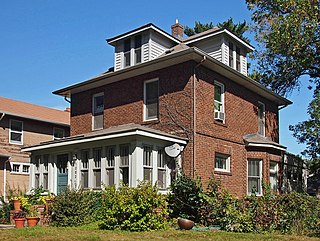
The Casiville Bullard House is a historic house in Saint Paul, Minnesota, United States. It was built from 1909 to 1910 by stonemason and bricklayer Casiville Bullard (1873–1959), one of the few known African-American skilled workers active in the building trades in early-20th-century Saint Paul. The house was listed on the National Register of Historic Places in 1997 for its local significance in the themes of black history and social history.

The Giesen–Hauser House is a historic house located at 827 Mound Street in Saint Paul, Minnesota.

The Hamm Building is a limestone, terra cotta, and brick commercial building located at 408 St. Peter Street in downtown Saint Paul, Minnesota. Its architecture is considered to be an "excellent example" of the Commercial Style. Built from 1915–1920, upon completion it housed the first movie palace in Saint Paul as well as the headquarters for Hamm's Brewery.

The Minnesota Boat Club Boathouse on Raspberry Island is a historic structure in Saint Paul, Minnesota, United States. It is the home of the Minnesota Boat Club, a rowing club founded in 1870, that is Minnesota's oldest athletic organization. In 1885, a wooden structure was built on Raspberry Island to house the Minnesota Boat Club. The club constructed a new boathouse in 1910, which was designed by George H. Carsley in the style of Mission Revival architecture. The boathouse building was listed on the National Register of Historic Places in 1982.
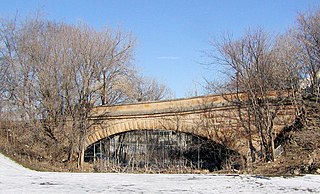
The Colorado Street Bridge also known as Bridge L-8803 is a masonry and brick arch bridge in Saint Paul, Minnesota's West Side neighborhood. It is 58 feet (18 m) wide and consists of a single oblique span of 70 feet 6 inches (21.49 m) that was built with the arch courses running parallel to the abutments, leading to a weaker structure than other skew arch construction methods, known as a false skew arch. It was designed in 1888 by Andreas W. Munster of the Saint Paul Engineer's Office and is now restricted to pedestrian traffic.

St. Agatha's Conservatory of Music and Arts or the Exchange Building, located on Exchange Street in Saint Paul, Minnesota, United States, was Minnesota's first fine arts school, established by Ellen Ireland, Eliza Ireland, and Ellen Howard. The 1908–1910 building was designed by John H. Wheeler.

Downtown Saint Paul is the central business district of Saint Paul, Minnesota, United States. Its boundaries are the Mississippi River to the south, University Avenue to the north, US 52 to the east, and Kellogg Boulevard to the west. It is bounded by the Dayton's Bluff, Summit-University, West Seventh, Frogtown, West Side, and Payne-Phalen neighborhoods. The West Side neighborhood is on the other side of the river, and can be accessed via the Robert Street Bridge or the Wabasha Street Bridge. Interstate 35E and Interstate 94 run through the north side of the neighborhood, providing a separation between the Minnesota State Capitol and other state government buildings with the rest of downtown.
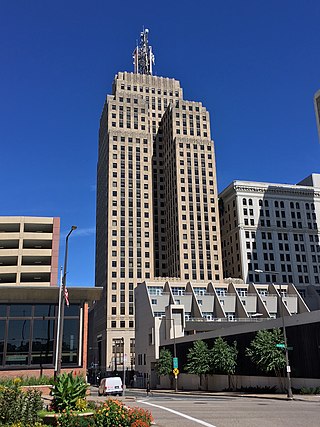
The First National Bank Building is a 417-foot-tall high-rise building in downtown Saint Paul, Minnesota, United States. The building has the tallest connecting skyway in the Twin Cities.

Munger Terrace is an architecturally significant rowhouse in the Central Hillside neighborhood of Duluth, Minnesota, United States. It was designed by Oliver G. Traphagen and Francis W. Fitzpatrick and built from 1891 to 1892, originally containing eight luxury townhomes. Munger Terrace was listed on the National Register of Historic Places in 1976 for its local significance in the theme of architecture. It was nominated for being Duluth's finest example of Châteauesque architecture applied to an apartment building.

Toltz, King & Day was an architectural and engineering firm in Minnesota, which is now TKDA.



























